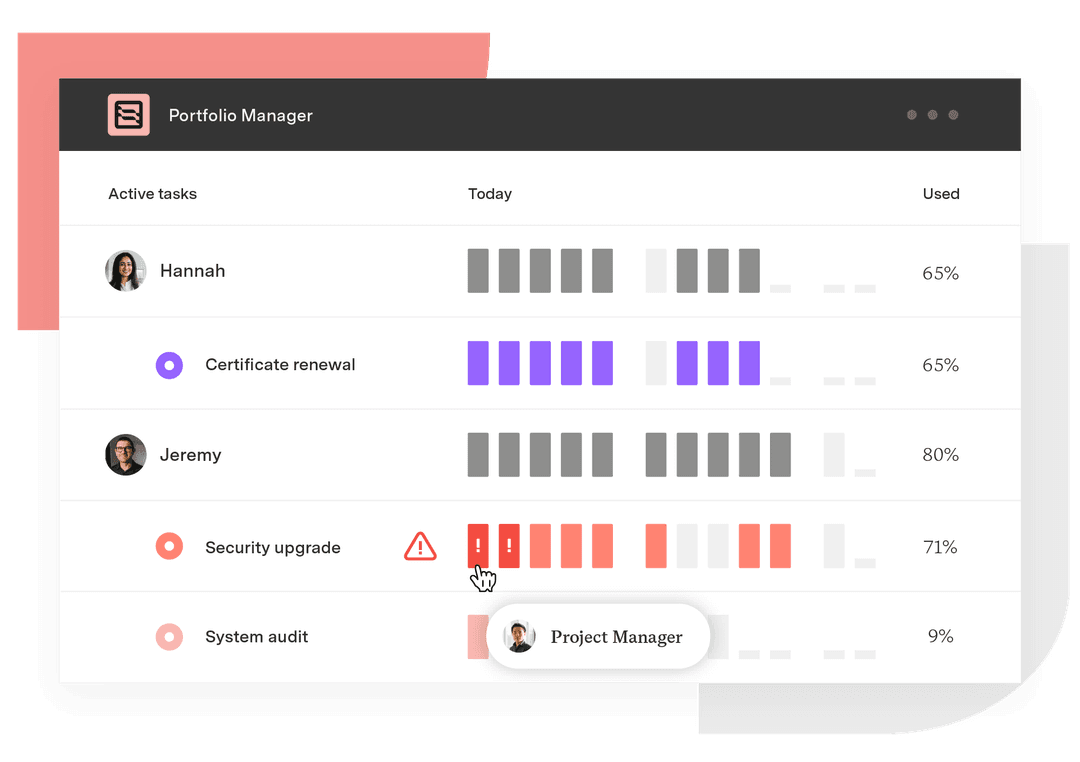How University of Puget Sound is transforming the culture of IT with Portfolio Manager
Tempo Team
About University of Puget Sound
Located in Tacoma, Washington, the private college was founded in 1988 and serves around 2,000 undergraduate and post-graduate students.
Challenge
One of the major projects for the university was the implementation of Oracle's PeopleSoft ERP software to consolidate and manage the institution's financial, HR, and student information systems.
“Running IT for a university like ours, you always have competing priorities. On the one hand, you invariably have to spend a certain amount of time on what we call ‘Keeping the Lights On’ activities, which includes everything from ensuring the availability of applications to patching servers," said Travis Nation, Deputy CIO for Enterprise Services in Puget Sound's technology services department – a 35-person team responsible for making sure the university's IT services keep humming along.
"However, the ultimate goal for any IT leader is to invest in technology solutions that will ultimately transform an organization and make it more efficient,” said Nation. “This ERP project represents one such strategic initiative, as it provides university administrators access to the kind of analytics that will allow us to improve the way we serve our students.”
In addition to serving as Deputy CIO, Nation is also a certified PMP so he understands how to navigate teams through complex projects with many moving parts.
Over the course of the project, Nation and his team used Microsoft SharePoint to manage project documents, calendars, and task lists.
MK Smith, communications manager for technology services, recalls their project methodology, saying, “At that point our approach would best be described as ‘ad hoc’. While it worked for the most part in the heat of what was an accelerated project timeline, it wasn’t sustainable for the long term. As we moved into the refinement phase of the project, we understood pretty quickly we would have to invest time in identifying a better solution.”
Solution
Nation and his team evaluated a number of different online project management solutions before selecting Portfolio Manager as their PM system of record.
“We had a pretty extensive list of requirements," said Nation. "Most importantly, the tool we chose had to be easy to use, both for our project managers and the rest of our team. But we also required many traditional project management capabilities, such as dependencies and advanced modeling techniques like critical path. And since our limited resources are connected to projects across the university, it was also important that we could have visibility across all the projects in our portfolio and be able to drill down into them.”
Once they decided that Portfolio Manager was the best tool for their organization, Nation and his team had to figure out how to get everyone on board and using it. According to Smith, the Portfolio Manager video tutorials played a key role in their decision.
“The help videos are really amazing. None of the other tools we evaluated had anything like them," said Smith. "The videos made it easy for our staff to teach themselves. Some project management tools make you feel like you need to have a PMP after your title, which can be paralyzing for some people. Portfolio Manager eliminates that pain point and makes it easy for anyone to simply start entering their tasks.”
Results
Portfolio Manager has also changed the dynamic of how the Puget Sound IT group functions as a team.
“Portfolio Manager has fundamentally changed the way we have meetings. Now we just pull up our workspace during our daily stand-up and run through our work breakdowns," Nation said. "What are our major tasks? How will we divide up our tasks? What are the dependencies? There’s no longer a need to have a dedicated project manager sitting in the office figuring it out. Instead, our people are doing and managing their own work which promotes collaboration and ownership for everyone involved."
As with any IT department, demand for technology resources is always high. Transparency into the full portfolio, as well as the resources attached to those projects, not only helps managers prioritize tasks, it also helps communicate those priorities to the C-suite.
“It’s hard to put into words exactly how powerful it is when I’m able to open our Portfolio Manager workspace and show the president and cabinet exactly what we’re working on. They say a picture is worth a 1,000 words; well that’s precisely what Portfolio Manager does for me and my team.”
Nation and Smith have also been impressed by how Portfolio Manager handles collaboration.
"One of the first things I do in the morning when I get to work is read the most recent comments in our workspace," Nation said. "It’s quite valuable to see what the team has accomplished and you can feel there’s a real sense of progress. The rest of the team can also see that we’re making progress and celebrate those victories. Our team has really embraced the collaboration aspect of the tool – they’re uploading documents, sharing links, and having meaningful conversations. Frankly, they’re doing things in the space that I didn’t even know we could do.”
But perhaps the thing they both appreciate most about Portfolio Manager is how it has adapted to the needs of its individual team members.
"The advantage of Portfolio Manager is that it’s not one size fits all. If you forced the Project Management Book of Knowledge (PMBOK) on people you would be hauled off campus," Nation joked. "You have to right-size it and Portfolio Manager has enabled us to do this. What it really does is take all theory off the table and put reality in its place. Now we know what we’re doing, how we are doing it, and when we are going to get it done.”
Sign up for a demo
Register

